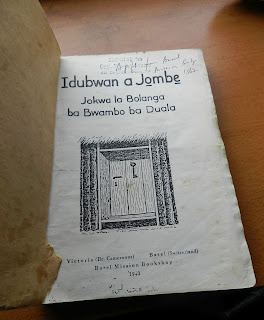Our Daily Bread (or Plantain)

In earlier blog posts , I wrote about the variety of Cameroonian food. In this post, I'll delve into the daily life of the household in Douala, and the efforts put into getting a meal on the table. Douala is situated 4 degrees north of the equator, near the coast, at the estuary of the Wouri River. The climate is tropical. Humidity is extremely high and temperatures are most often in the 90-degree Fahrenheit range (30 Celsius). Plantain There is a rainy season that lasts about two months every year, when it gets slightly cooler (in 12 years I managed once to wear stockings, not really because I needed to), but humidity goes through the roof, and it can pour nonstop for several days in a row. In the first months, I used to go to the food market several times a week to buy groceries. Deido market was the closest (Deido is the Douala neighborhood where we lived, and my husband's ancestral home). It was not a very large market, but you could get everything you needed fo...
















